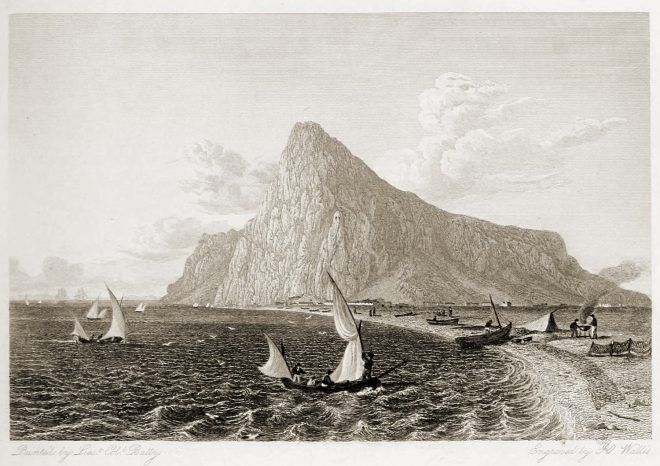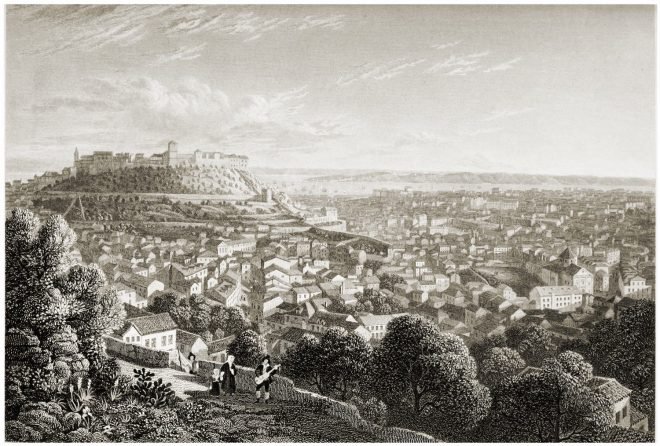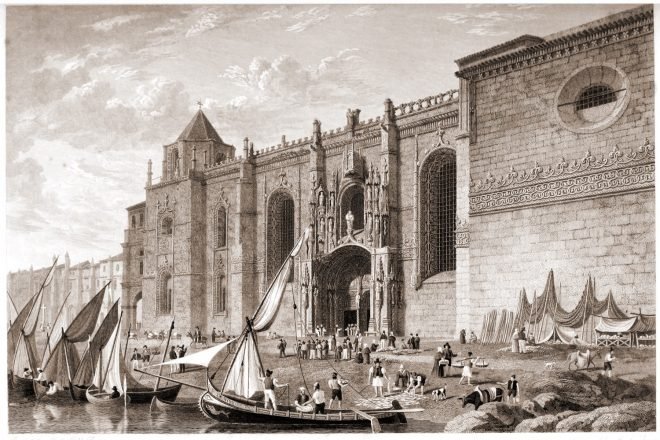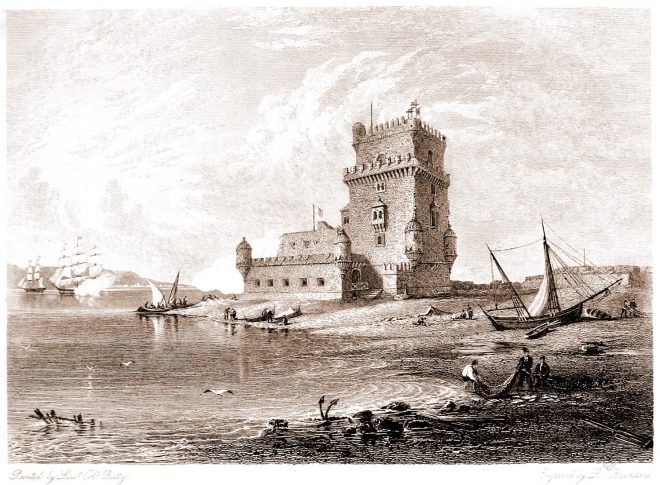The most characteristic feature of the rock, or rather mountain of Gibraltar, may be seen to the greatest advantage from the eastern shore of the isthmus, which connects it with the mainland of Spain.
Panorama of Lisbon in incomparable splendour from Almada.
Opposite to Lisbon stands Almada, on the summit, and near the east end, of the high cliffs, which extend along the south bank of the Tagus, from thence to the sea.
Characteristic scene. Pillory of Lisbon. The Largo do Pelourinho.
The Largo do Pelourinho is so named from the small ornamental column which stands in its centre.
Lisbon, from the Chapel Hill of Nossa Senhora da Monte.
One of the most comprehensive views of the city of Lisbon may be obtained from the above-named eminence, within a short distance from the Chapel of Nossa Senhora da Monte.
The Tomb of St. James in the Valley of Jehoshaphat.
The monkish opinion is, that into this cavern the Apostle James retired during the interval between the Crucifixion and the Resurrection.
The Greek Chapel of the Holy Sepulchre at Jerusalem.
The Church of the Holy Sepulchre. The Armenian bishop has taken his place in front of the altar.
Lisbon. Selected city view from Rua de San Miguel.
The ancient city of Lisbon from the Rua de San Miguel. Select views by Robert Batty.
The Mosteiro dos Jerónimos, also known as Jerome Monastery, Lisbon.
The Mosteiro dos Jerónimos, also Mosteiro de Belém; Hieronymite Monastery, also colloquially known as Jerome Monastery,
The Belém Tower or Torre de Belém. Tower of Saint Vincent at Lisbon.
The Torre de Belém in the Belém district at the mouth of the River Tejo is one of Lisbon’s most famous landmarks.
The Sultan Ahmed Mosque in Istanbul. Known as the Blue Mosque.
The Sultan Ahmed Mosque in Istanbul, built by Sinan’s pupil Mehmet Ağa, is a major work of Ottoman architecture.










